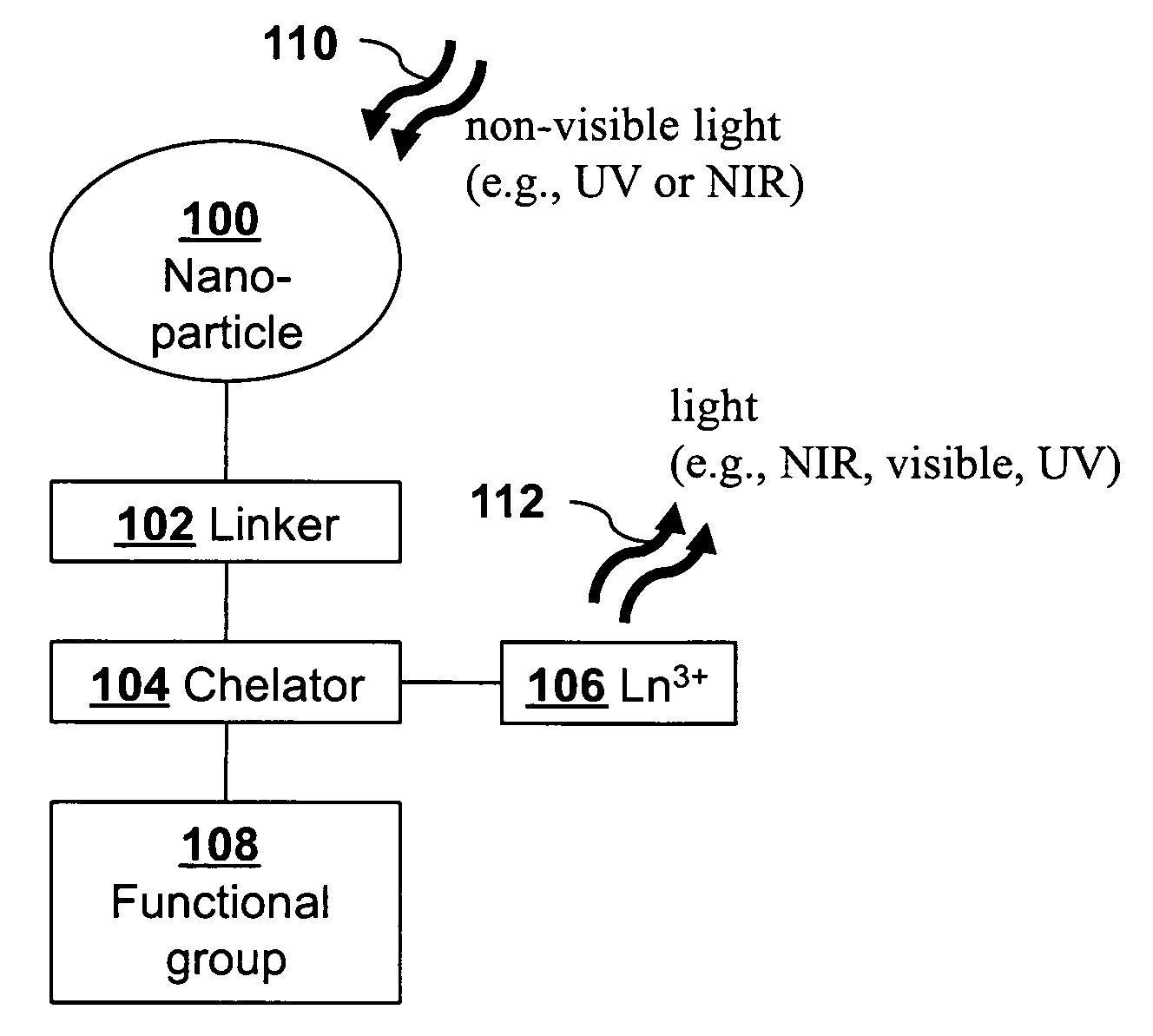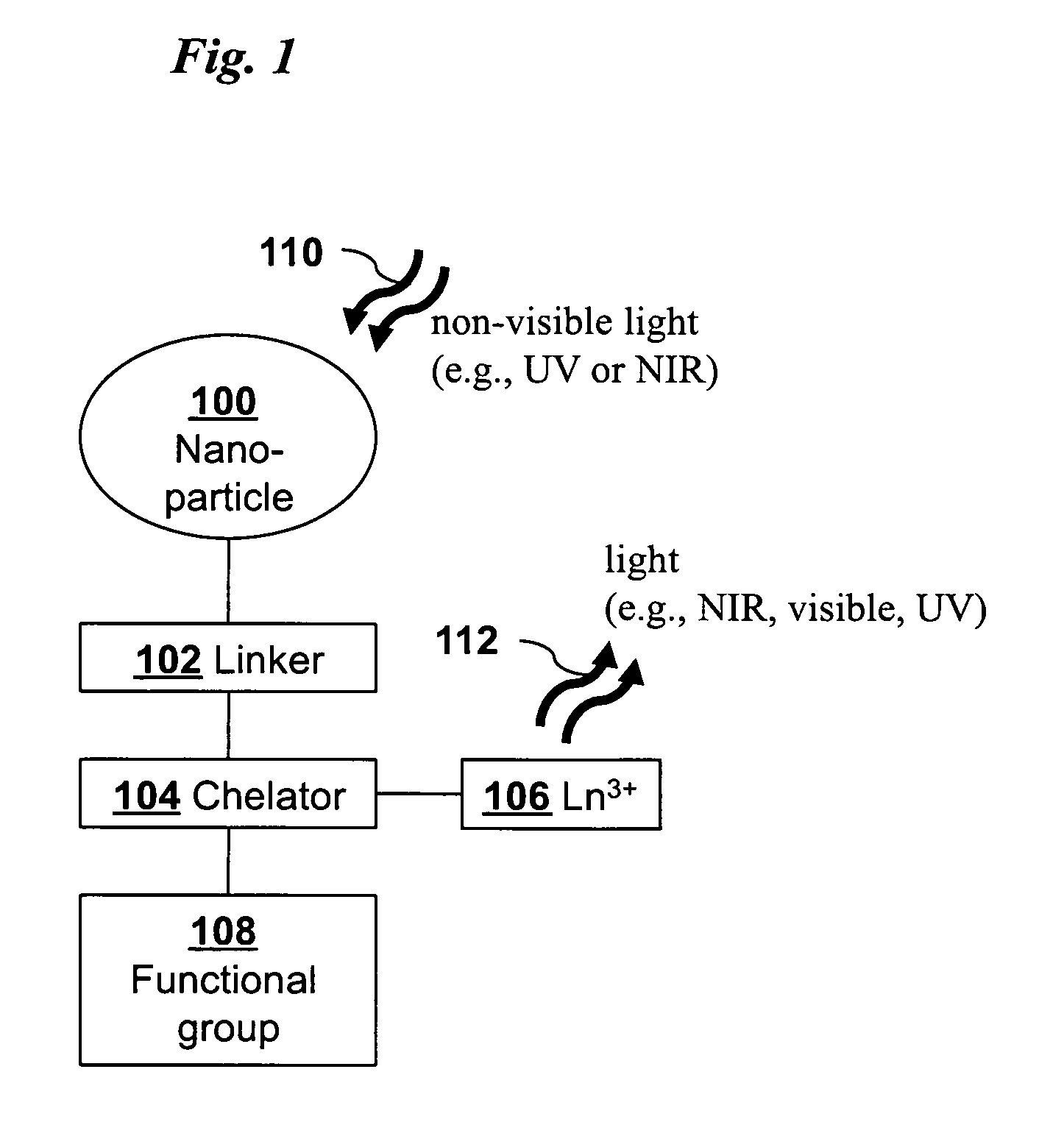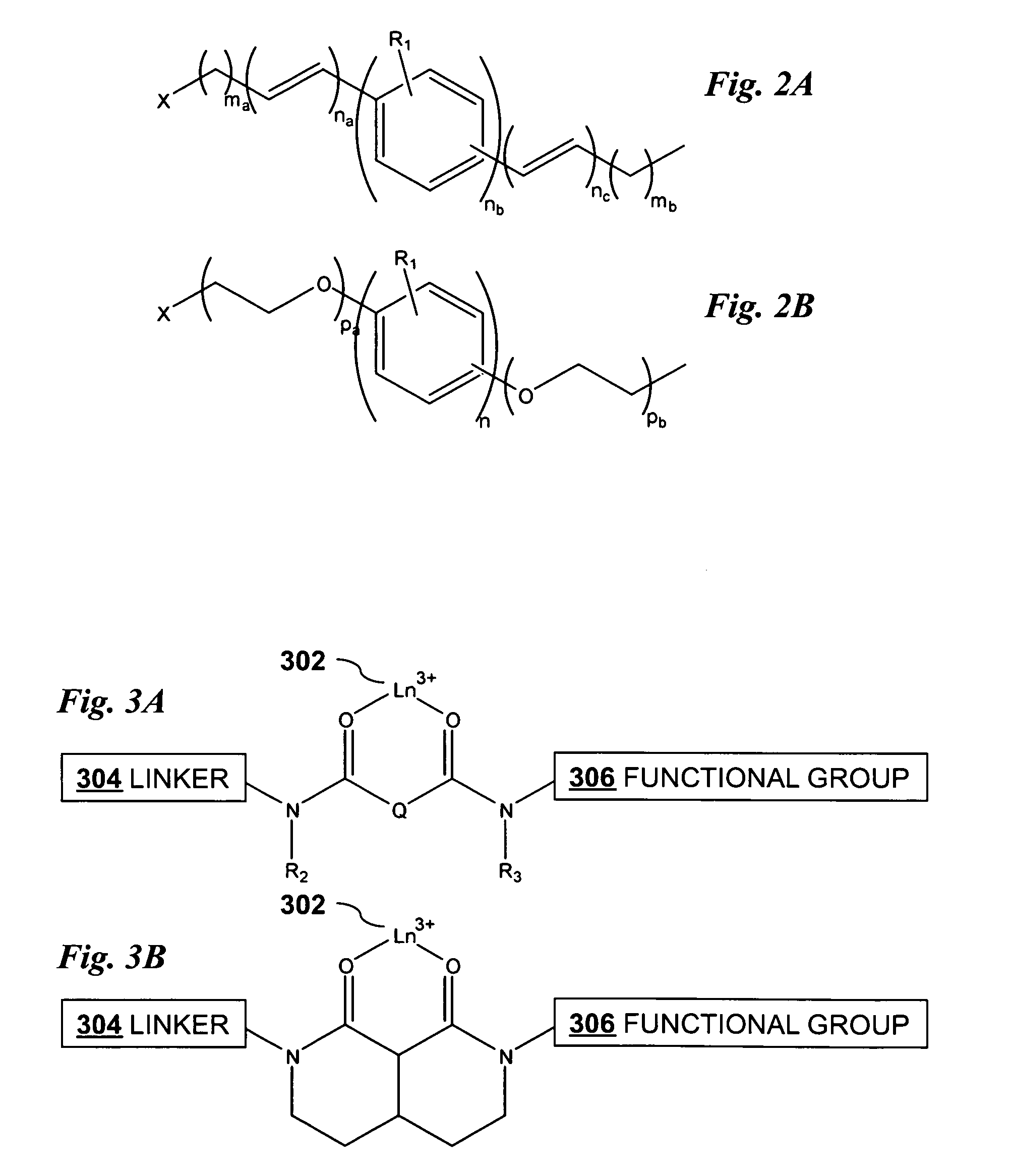Photoactive taggant materials comprising semiconductor nanoparticles and lanthanide ions
a technology of lanthanide ions and photoactive taggants, which is applied in the field of photoactive taggant materials, can solve the problems of high cost of these devices, limiting their use, and not being suitable for covert tagging applications
- Summary
- Abstract
- Description
- Claims
- Application Information
AI Technical Summary
Benefits of technology
Problems solved by technology
Method used
Image
Examples
example 1a
[0064]The first type of security is provided by the simple fact that the inks are all solar-blind materials. Both absorbtion (interrogation) and emission (readout) are invisible. This establishes the first layer of security. If the dots are excited by suitable UV light, then they will all emit light in the NIR region of the spectrum. Although the entire pattern of dots may then be seen using a broad spectrum NIR-sensitive detection system, it remains invisible to the naked eye.
example 1b
[0065]As just discussed above, if all the dots are excited by suitable UV light, then all will emit light in the NIR spectrum. Because the three rows of dots have different lanthanides, however, the light emitted from the three rows will be different. Consequently, detection using a monochromatic NIR vision system can distinguish these differently encoded rows from each other. For example, if 1340, 1060 or 880 nm is monitored, then only those dots containing material with Nd3+ emitters (i.e., the top row) will be detected upon irradiation. If 980 nm is monitored, then only those dots containing material with the Yb3+ emitters (i.e., the middle row) will be detected. If 1550 nm is monitored, then only those dots containing material with the Er3+ emitters (i.e., the bottom row) will be detected. By controlling the placement of these different types of dots, different patterns can be encoded and detected. For example, a bar code could be implemented by suitable arrangement of stripes o...
example 2
[0066]Another type of security is provided by the excitation wavelength. In the previous examples, the excitation (interrogation) light excited all the dots in the array. However, additional security and encoding may be provided by taking advantage of the dependence of nanoparticle excitation properties upon nanoparticle size. Because of the quantum confinement effects exhibited through the use of quantum dots or quantum materials, the size of the nanoparticle has a large effect upon the absorption spectrum of the material. The larger the quantum dot, the broader its absorption spectrum (absorbing more light over a larger spectrum). The smaller the quantum dot, the more energy needed to induce exciton formation within the quantum dot, and the smaller the spectrum available for this excitation.
[0067]Use of this property of these metal oxide nanoparticles enables the selective excitation, and hence, emission of the quantum dots based on size. For example, high energy UV-A light will e...
PUM
| Property | Measurement | Unit |
|---|---|---|
| visible wavelength spectral | aaaaa | aaaaa |
| wavelengths | aaaaa | aaaaa |
| chemical functionality | aaaaa | aaaaa |
Abstract
Description
Claims
Application Information
 Login to View More
Login to View More - R&D
- Intellectual Property
- Life Sciences
- Materials
- Tech Scout
- Unparalleled Data Quality
- Higher Quality Content
- 60% Fewer Hallucinations
Browse by: Latest US Patents, China's latest patents, Technical Efficacy Thesaurus, Application Domain, Technology Topic, Popular Technical Reports.
© 2025 PatSnap. All rights reserved.Legal|Privacy policy|Modern Slavery Act Transparency Statement|Sitemap|About US| Contact US: help@patsnap.com



